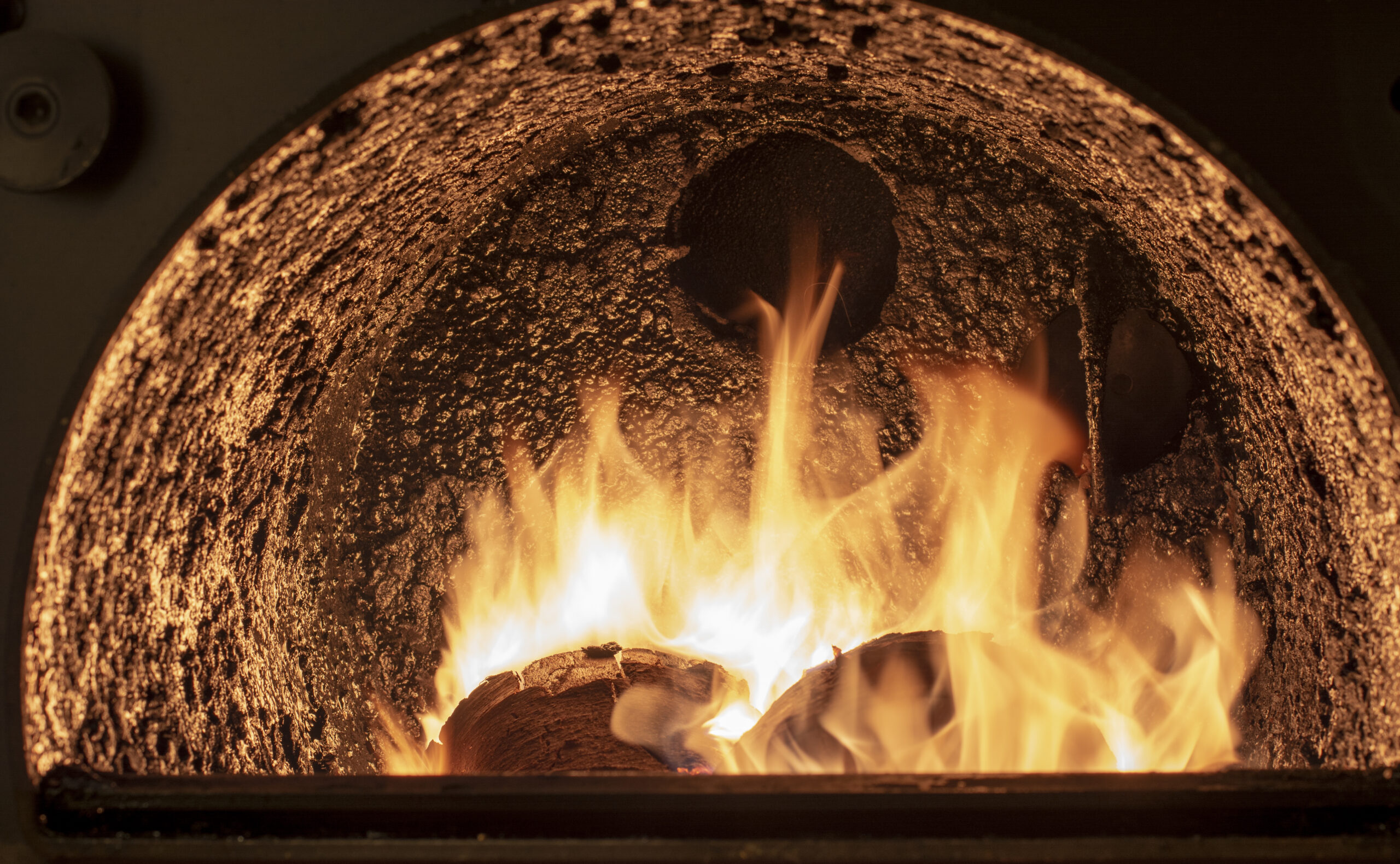What is Creosote?
Creosote is a sticky, highly flammable substance that is a natural byproduct of chimney smoke. Creosote builds up inside of chimneys over time.
What Does Creosote Buildup In a Chimney Look Like (Stages Of Creosote)
Stage 1 Creosote Buildup
Stage 1 creosote buildup is flaky and powdery and is similar in appearance to coffee grounds. This is the normal stage of creosote buildup. It is flammable and therefore it is important to regularly remove it from your chimney. When the temperature gets hot enough while burning a fire, gasses release from the burning wood and condense on the cold surfaces of your chimney, resulting in the creosote buildup.
Stage 2 Creosote Buildup
The second stage of creosote buildup is characterized by a high concentration of thick tar and is highly flammable. This level of buildup significantly increases your risk of a chimney fire.
Stage 3 Creosote Buildup
This is the last and most dangerous stage of creosote buildup and it is not removable. At this point, the creosote is hard and shiny and can easily ignite, leading to a chimney fire. You should hire a professional to remove the normal creosote before it gets to this point.
What Are The Risks Of Creosote Buildup In The Flue?
As explained earlier, normal creosote buildup is flammable but it can be cleaned by a professional. However, if the creosote reaches Stage 2 or 3, it becomes a serious fire hazard.
The Solutions for Creosote Buildup
Prevention: Regular annual cleaning of your chimney can prevent the build up of creosote before it becomes a serious fire hazard.
Frequent Cleaning: If your chimney has already reached Stage 2 or Stage 3 creosote build up and you use your fireplace several times per week during the cold weather, it is advisable to either cease use of the chimney or to have it frequently cleaned. This could be done at the start of the burning season and mid the burning season to ensure your chimney does not accumulate more flammable creosote.
Install a New Liner in the Chimney: Some homeowners choose to have the chimney relined with a stainless steel liner and this is a surefire way of reducing fire risk.
Install a Gas Insert with Liner: A common solution for a chimney that is unusable due to creosote buildup is to install a gas insert into the fireplace. These units have their own liners and can be a safe solution for homeowners who have Stage 3 Creosote buildup.
Chemical Cleaning: Chemicals can be used to decrease the creosote buildup and it does help but its not a surefire method for handling creosote build up and frequent cleanings would still be required to keep it safe. The chemical process usually takes about 3 hours to apply, then it sits for 2 weeks and is swept. After this process, frequent cleanings will be required to keep it from building up again.

